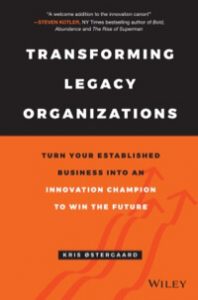When startups reach their unicorn status in a rapid pace and volume it puts incumbents in an uneasy position. The fastest startup to reach one billion dollar status might be Uptake who reached it in 236 days from its initial funding.
For established companies to survive in future they need to overcome innovation barriers. The easiest way to innovate is to optimise the existing, and therefore improve the past.
The second tier is to prepare for the future by augmenting innovation. Here the challenge is to mix the future to the existing structures and chores of the organisation.
The most radical and genuine form of transformation is inventing the future by mutating innovation. Amazon is good at this. They create and enter new markets amebae-like as they go along.
You have reached your end of the improvement line when marketing becomes the most significant thing about your product. Like Pine & Gilmore stated 20 years ago: “Marketing is the price you pay for being unremarkable.”
Roadblocks for innovation can be divided into three categories of immune systems: individual, organisation and society. The lack of general willingness to change is one aspect to consider but no individual is a match for a systemic resistance.
It is only a very few people who are actual innovators or first movers. This has been estimated to be around 2,5 % of people. The scope of the hill to overcome becomes evident also when considered that in most of the Western countries over 90% of companies are SMEs.
Their lack of resources, innovation power and awareness to change are among the biggest challenges for a long-term transformation. Just keeping up keeps their plates full. For majority the status quo and stability are more comfortable than the forthcoming changes and possibilities.
When considering what makes customers tick one way to look at the issue is dividing it into four parts where everyone wants to be better: Do, Look, Feel and Be. Some of these may be stronger for a particular product or service but for all it’s at least good not to be on the negative side of any of the four aspects.
Be and Feel are intrinsic but differ where Feel is reactive to the external stimuli and Be is proactive in nature focusing on values and morality. Similarly Do is proactive and extrinsic focusing on results, competences and skills where as Look is about social status, and as such reactive and extrinsic.
Millennials prefer to work for companies with a deeper meaning yet many organisations do not have distinctive transformational driver beyond being “industry leader” or within top x of a defined category.
How do you innovate outside of your category or industry if your company is defined to be the leader in the stated category?

